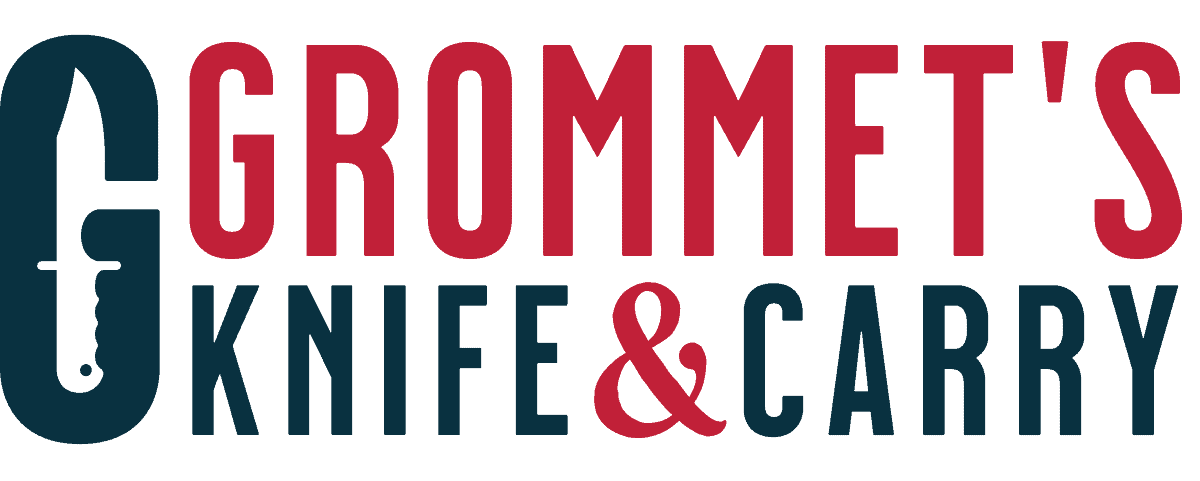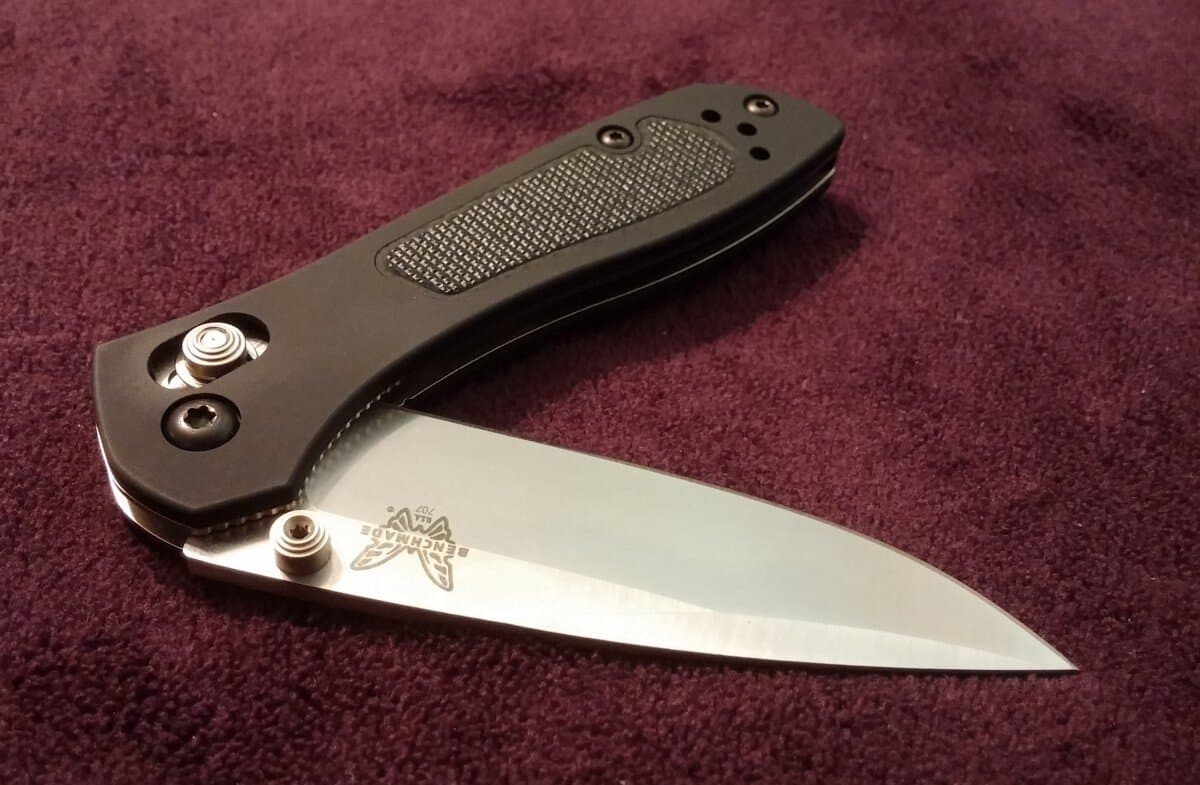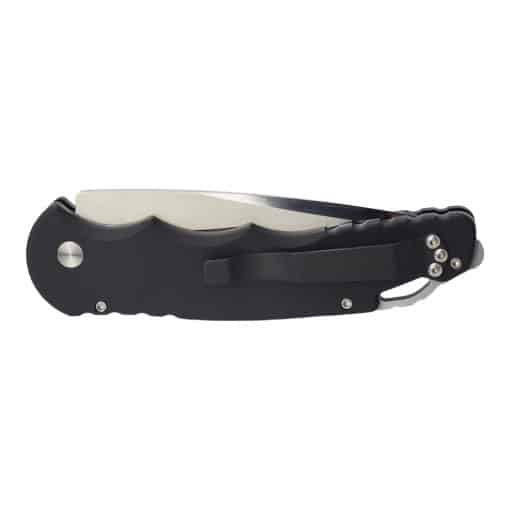Knives, Pocket Knife, Style
How to Close a Pocket Knife
No matter the type of pocket knife, when the blade of your pocket knife is open, it’s important that it’s securely locked so that it doesn’t slip. And that’s the whole point of the locking system of an EDC pocket knife: to ensure optimal and safe use of the knife.
At Grommet’s Knife and Carry we carry a variety of knives, knowing how they lock can help you decide on which knife will be best for you. These locking systems are very different from one model to the next. Front pump, rear pump, flat spring, or rotating ferrule – the ways to close a folding knife are very diverse.
Explored in this article all the subtleties of each of the pocket knife blade closures you’ll find at a knife store. You’ll learn more about each type of knife, and how to identify the advantages and uses of each mechanism and make an informed choice.
The Lockback
The lockback is one of the oldest locking mechanisms in the history of pocket knives. This type of locking mechanism is provided by a locking lever on the back of the handle with a projection. When the pocket knife is opened, its metal spine interlocks with a notch in the back of the blade, preventing its return movement.
For this lockback mechanism, the lever is pressed by a flat spring inside the back of the handle. It’s unlocked by pressing down on the back of the lever. The latter is accessible through a small cutout in the linings on the back of the handle.
In the closed position, the lockback knife lever presses against the cam surface at the back of the head. It prevents iit from opening on its own.
The advantages of this lock are ease of use for this type of knife. Both with the right and left hand. Other advantages are the simplicity of construction and reliability when holding the pocket knife blade in the closed position.
The Liner Lock
The liner lock design in the liner lock pocket knife is currently the most common locking mechanism in use. You can lock the liner lock knife by means of a spring-loaded wing. The wing is an integral part of one of the side plates (liners) of steel or the titanium skeleton of the handle.
After opening the pocket knife, the liner bends at a slant to the inside of the handle. It clasps the beveled back part of the head, preventing its return movement.
Unlocking is done by bending the locking wing outwards. The most convenient way to do it is to press it with your thumb. In the closed position, it’s pressed against the pawl drilled on the side of the rear part of the pocket knife blade. This prevents the blade from opening automatically.
The main advantages of liner lock are simplicity of construction and intuitive operation. The liner lock mechanism, however, is slightly more difficult to operate for left-handed people.
The Frame Lock
The frame lock is a very strong, stable lock using the principle of liner lock operation in a frame lock knife. The main difference with the frame lock lies in the side plates of the handle frame. They’re so thick that no extra facings are needed. Thanks to this, the locking wing is much thicker and more rigid. Thus frame lock pocket knives are less sensitive to dynamic loads.
In addition, this lock is much more resistant to dirt. There is no space between the locking leaf and the facings where dirt could accumulate. This lock is most often made of titanium, less often of steel, and occasionally of aluminum.
The Compression Lock
The compression lock is closed in a similar way to a liner or frame type locking pocket knife. What makes it different is the presence of a notch at the base of the blade and a locking pin inside the handle. This type of lock uses a liner inside the handle. The role of the liner is to hold the blade open or closed. Basically, it’s the piece of metal that you push to the side of the handle when handling.
To close your knife safely, you simply hold it in your dominant hand, especially your dominant thumb. The blade should be facing outward and the handle cavity facing up. Start to close the blade very gently with your other hand. And when the blade is closed a quarter of the way, remove your thumb.
When the knife is in the open or closed position, the liner automatically and precisely fits into the notch at the base of the blade. The handle also has a locking pin between which the liner fits.
The Button Lock
The button lock is a popular locking system. It’s most often used on switchblade knives and rapid deployment knives. These qualities are very appealing but also make it a rather dangerous type of knife. Especially if you don’t handle it with care. One press of the release button can trigger the blade, which can surprise and injure you.
To close this knife safely, you must hold it in your dominant hand and thumb. The infamous release button should be located on the handle facing up. As for the blade, it must be oriented towards the outside. And from there, it’s the same procedure as the compression lock type. You release the button when the knife is closed to about 1/4 of its length. Continue to close it until the blade locks into the handle cavity.
The Axis Lock
In the axis lock, the closing of the axis lock pocket knife is done by an actual axis. It moves horizontally through the notches in the steel side plates of the handle frame. When the knife is opened, the locking axis overlaps the back of the blade from above. This prevents the blade from moving back. This axis is attached to a u-shaped tension wire called the omega spring.
Unlocking is done by pulling back the locking axis. Its ends are accessible through cut-outs in the linings on the sides of the handle. In the locked position, the axle presses on the cam surface at the rear of the head, preventing it from opening by itself
The advantages of the axis lock are resistance to contamination and practical insensitivity to dynamic loads. It’s easy to operate with either the right or left hand and is lightweight. Its weak point is the relatively fragile omega springs.
The Ring Lock
The ring lock has quite a few variations, and they’re pretty diverse. The most common has a single locking piece. This is located along the spine of the handle. It’s connected to the ring used for pulling and twisting, and also holds the locking piece securely.
This type of lock looks like a gear with pronounced teeth. And depending on the number of teeth, you can choose to lock the blade at different angles. The famous gear-like piece will then be located at the blade pivot.
This type of lock is the slowest to close of all the models in this guide. To do this safely, you must slide your finger into the ring and pull it out. At the same time, you must push on the blunt side of the blade. This motion serves two purposes: it releases the blade and gets your hands out of the way. The thing to avoid is wrapping your finger around the handle.
The Lever Lock
The lever lock is among the rarest types of locking mechanisms. It’s usually used on assisted opening knives. The fact that it’s not so common doesn’t prevent it from having many qualities such as speed and safety – one not excluding the other.
On the technical side, there is a level and an indentation on the handle at the neck of the knife. You have to flip the lever to unlock the blade. And to get the assisted blade out, you have to press the level when it’s flipped.
To close these, simply open the level again by simply pressing it down. Be sure to use a flick to put the blade back into the handle. If you have experience, you can also do this with your fingers.
The Tri-Ad Lock
The tri-ad lock contains a space at the back of the knife. When the blade is opened, it serves as a release to free the blade from its compressed position. This is enough to close the knife.
This lock is also equipped with a hammer-shaped cutout. This is located at the back of the blade tang, next to an extra locking pin. And that’s the key: it eliminates the vertical play of the blade.
The entire surface of the metal plate and the blade tang fit together perfectly. The locking mechanism is slightly inclined. It tends to force the lock inward rather than outward. This helps to protect the knife from wear, as this movement relieves the lock bar from impact.
The Power Lock
The power lock is a variation of the lockback. It was originally intended to improve the locking force on a 5″ blade. This lock looks simple and rather ordinary, but when you look into it, you discover its incredible power.
The secret to this locking feature and its strength is a secondary cam. When you open the blade, the tang makes contact with a locking pin. This one is very solid. It’s located in the handle and its main role is to stop the rotation.
The blade is equipped with a locking bar halfway down the handle that works with the counter-rotating cam that will then engage the tang.
This model also contains a spring-loaded lever. This one is located at the back of the knife handle. It’s responsible for the rotation of the cam around its pivot. This allows the finger at the base of the cam to slide against a concave surface on the top of the tang, avoiding the sharp edge. Each of these elements ensures a secure closure of your pocket knife.
What is the most secure pocket knife locking system?
Debates have never ceased on this subject. All the locks described in this guide are very safe – certainly safer than non-locking pocket knives. What will make a real difference is the skill with which these mechanisms are made. A low-cost, sloppy locking system may be less secure than a locking system made to last.
Be especially careful when handling knives that don’t have a locking mechanism, like the slip joint knife.
Now you know how to close a pocket knife
These are most of the locking systems that folding knives have. If the knife you bought at an online knife store uses one of these mechanisms, make sure you close it safely and properly, paying careful attention to your closing technique. No matter the types of pocket knives you use, as long as they have a secure locking mechanism, they can easily be closed and stored in the comfort of your pocket.
Whether you’re a beginner knife owner, or an expert on many types of knives, visit us at Grommet’s Knife & Carry to learn more.
 PAY IN FOUR INTEREST-FREE PAYMENTS WITH SEZZLE
PAY IN FOUR INTEREST-FREE PAYMENTS WITH SEZZLE






